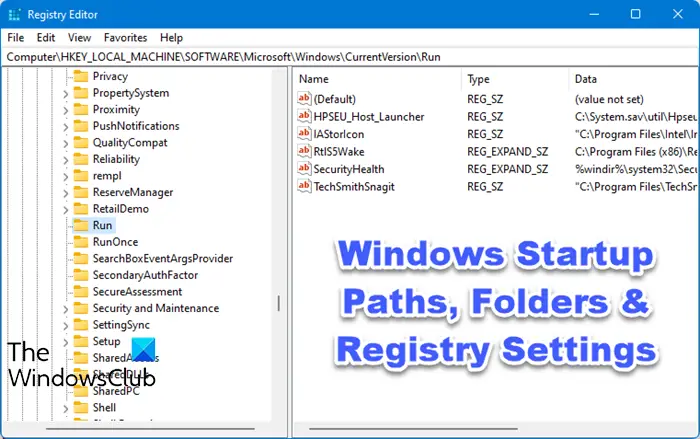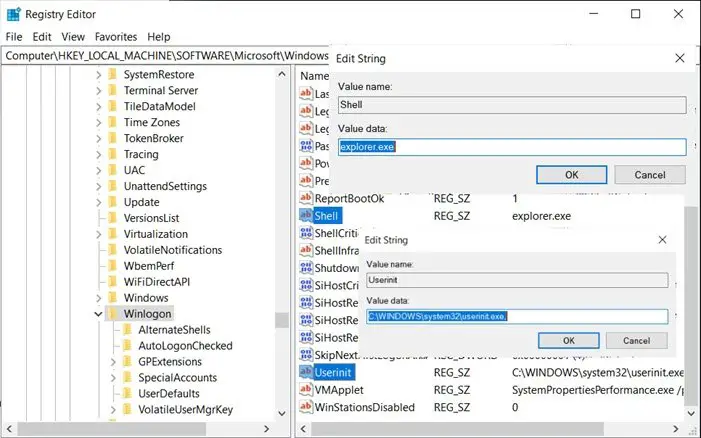Windows holds a lot of places where a program can be placed so that it will launch as soon as you logon to the computer. If you want to access the applications which are in these Startup programs, it is an alternative way. You can also utilize these paths in applications or any custom change you plan to make in Windows 11 and Windows 10.

Here is a list of Windows Startup Paths, Folders, and Registry Settings for applications and programs when they are launched at Startup. This will help you manage or disable startup programs.
Windows Startup Paths, Folders & Registry Settings
You can access them in two places—
- Startup folders and
- Registry Settings.
Do remember that before making any changes to the registry, always make sure to take a backup or create a system restore point.
1] Startup folders
First, enable show hidden files option and then navigate to any of the following paths and Add shortcuts of the programs to be run at startup.
C:\Users\[USERNAME]\AppData\Roaming\Microsoft\Windows\Start Menu\Programs\Startup C:\Users\AllUsers\AppData\Roaming\Microsoft\Windows\Start Menu\Programs\Startup
You can quickly open the startup folder by typing shell:startup in the Run prompt, followed by pressing the Enter key to open the Windows Startup folder.
2] Registry Settings
Navigate to any of the following paths according to your requirement and then add a new “String key” and store path of the Program to be run in this key’s value.
For Local Machine:
HKEY_LOCAL_MACHINE\Software\Microsoft\Windows\CurrentVersion\Run HKEY_LOCAL_MACHINE\Software\Microsoft\Windows\CurrentVersion\RunOnce
For Current User
HKEY_CURRENT_USER\Software\Microsoft\Windows\CurrentVersion\Run HKEY_CURRENT_USER\Software\Microsoft\Windows\CurrentVersion\RunOnce
Other Paths
HKU\ProgID\Software\Microsoft\Windows\CurrentVersion\Run <systemdrive>\Documents and Settings\All Users\Start Menu\Programs\Startup <systemdrive>\Documents and Settings\username\Start Menu\Programs\Startup
Some of these folders are hidden while others need you to add user account access by changing folder permissions.
3] Programs to run at logon time or when Explorer runs

Navigate to the following path:
HKEY_LOCAL_MACHINE\Software\Microsoft\WindowsNT\CurrentVersion\WinLogon\
Add the path of your program to be run as follows:
- Via Shell String as by editing the value of key Shell as:
explorer.exe, <path of your program with extension .exe>
- Via Userinit String as by editing the value of key Userinit as:
C:\Windows\System32,<path of Your program with extension .exe>
This technique lets you add programs that you can directly run from the Run prompt (Win + R) or when you log in to Windows.
Read: How to find hidden Startup programs slowing down Windows Boot
I hope the post was informative, and you now know Windows Startup Paths, Folders, and Registry Settings.
TIP: Autostart Explorer lets you explore EVEN the most obscure startup locations.
Leave a Reply